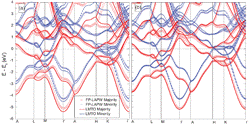Department of Physics and Astronomy: Publications and Other Research

Kirill Belashchenko Publications
Document Type
Article
Date of this Version
1-2019
Citation
Materials Today, Volume 22, January/February 2019, pp 85-107.
https://doi.org/10.1016/j.mattod.2018.05.003
Abstract
Advances in scaling down heterostructures and having an improved interface quality together with atomically thin two-dimensional materials suggest a novel approach to systematically design materials. A given material can be transformed through proximity effects whereby it acquires properties of its neighbors, for example, becoming superconducting, magnetic, topologically nontrivial, or with an enhanced spin–orbit coupling. Such proximity effects not only complement the conventional methods of designing materials by doping or functionalization but also can overcome their various limitations. In proximitized materials, it is possible to realize properties that are not present in any constituent region of the considered heterostructure. While the focus is on magnetic and spin–orbit proximity effects with their applications in spintronics, the outlined principles also provide a broader framework for employing other proximity effects to tailor materials and realize novel phenomena.
Included in
Atomic, Molecular and Optical Physics Commons, Condensed Matter Physics Commons, Engineering Physics Commons, Other Materials Science and Engineering Commons, Statistical, Nonlinear, and Soft Matter Physics Commons


Comments
This is an open access article under the CC BY-NC-ND license